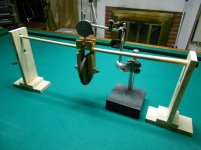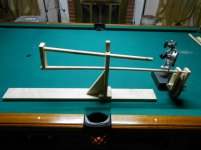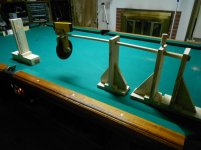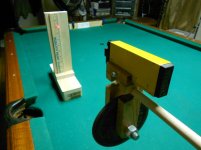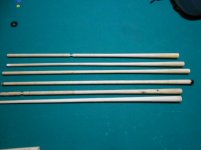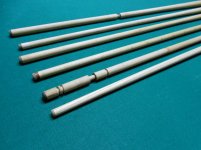There is a difference between product testing and scientific testing.
This is product testing in that all it shows is the difference's in performance of the different cues under the same test parameters. Product testing does not always reflect actual real world operating conditions. Such is the case in this testing.
Scientific testing would take into consideration all the variables that are encountered in the real world of shot making and not just one set of testing parameters.
Doing test at only one speed does not reflect what happens at various speeds that is used in shot making. In 14.1, slow rolls are key, yet, the testing here does not include these slow rolls.
What about bridge length? The distance from the bridge pivot and the cue ball. In this test, the same length is used unlike in the real world of shot making where the same bridge length can not always be used.
The result of this marketing is a person will buy a LD shaft thinking they need one, when in reality, they are just shooting too hard, are trying to do too much on a shot with a cue ball.
I've been playing a new player that got a LD shaft cue and is so proud of it. He can talk the lingo, but he is clueless about the real facts behind shot making. Instead of understanding the ins and outs of shot making, he bought into the hype of needing a LD shaft because of per marketing.
I find the biggest weakness of players is lack of knowing just how much speed is needed to do a shot. I notice most shoot harder than needed for the shot or not understanding how to make the CB work for you. So, they get a LD shaft thinking that's the answer and it might be for a short time only. No matter what shaft you use,until you master your speed control, you will only go so far.
And the only way to master speed control is table time and not equipment used.
Most on here will never get the level of feel needed to truly know what is going on between the CB and cue tip.
Hopefully, this post will not cause the thread to deteriorate into YET ANOTHER LD shaft debate.
But relative to your comment above...I can't imagine anything GOOD about squirt. Rather, I think it is a flaw that good players learn to anticipate and compensate for.
Therefore, to the extent that a particular shaft ACTUALLY results in less squirt over a broad range of shot speeds...tip offsets etc. vs. some other shaft, then for newer players or more experienced ones who feel that they have not "mastered" their current game and don't mind spending the TIME to adapt to a LD shaft, then there is no "hype" involved.
The only "hype" would be if the cue didn't actually produce the range of results that the manufacturer claims OR if the manufacturer CLAIMS that using their cue will somehow revolutionize your game.
Most make no such claims in my observation. The first paragraph in the Predator web site section on "Performance" states..."Enhancing your performance is what inspires us, drives our research and defines our mission."
"Enhancing" doesn't mean revolutionizing . (There may be hype elsewhere on the site. I've not read every page but if I was going to hype my product, I would do it on the first page). (-:
The LD debate has always reminded me of the trasition from persimmon drivers to metal. Unfortunately, I'm old enough to have been there at the time and I guarantee you that TONS of people disrespected "metal woods" and said things like..."If persimmon was good enough for Sneed, it's good enough for me."
So...IF...repeat...IF a
purported LD shaft
actually reduces squirt across a range normally used shots, it is just unfounded to refer to the promotion of such technology as being "hype."
(-:
EagleMan
